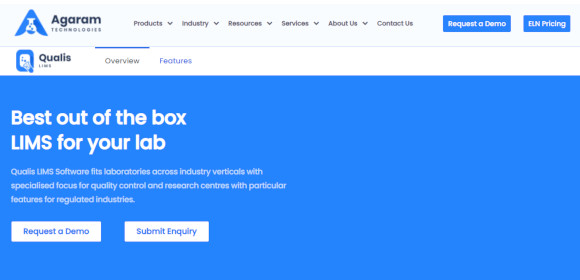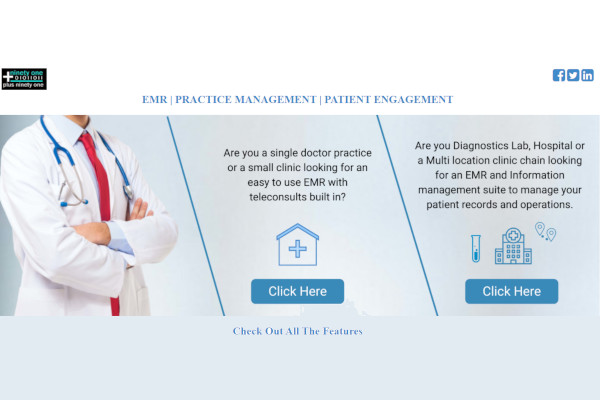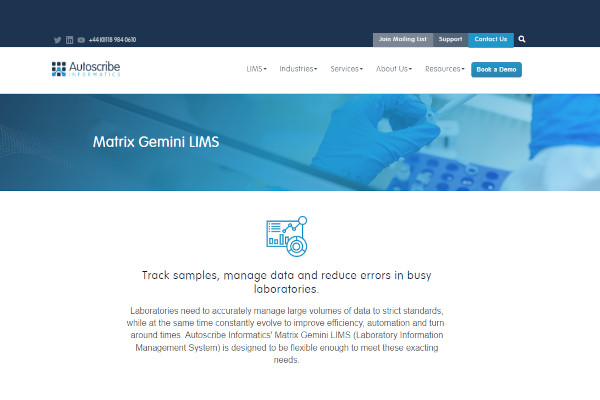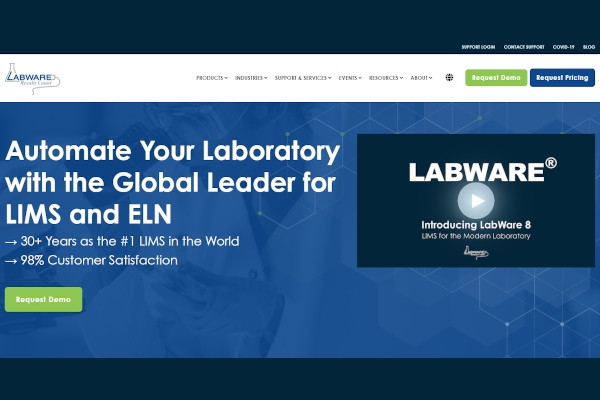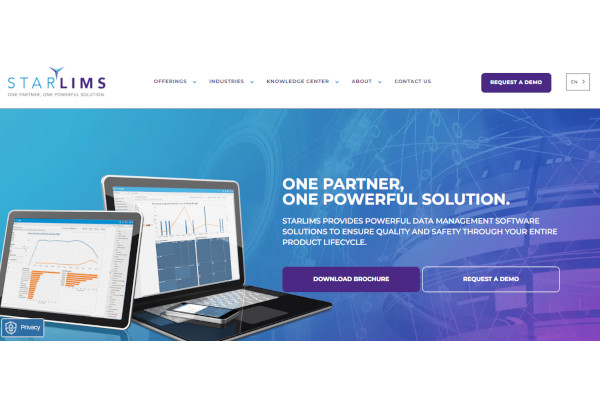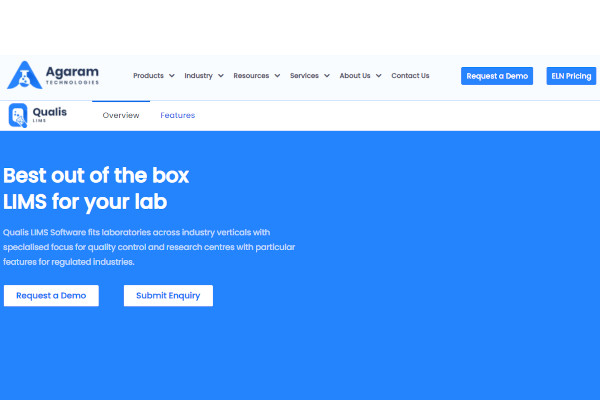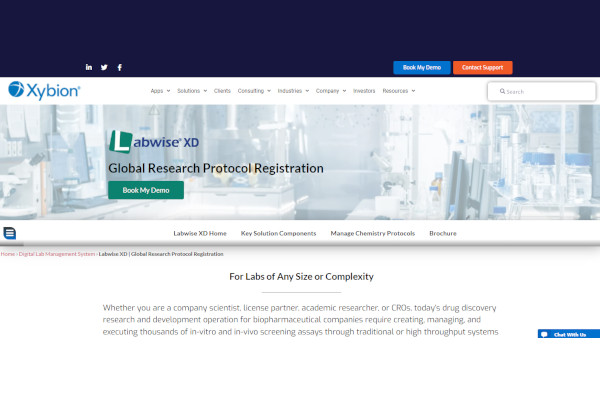LIMS stands for Laboratory Information Management System and refers to software that enables efficient management of both samples and the data connected with them. Your laboratory will be able to handle samples and the information connected with them, as well as automate processes and integrate equipment, if it uses a LIMS.
10+ Best Laboratory Information Management Software
1. Halemind
2. MediXcel EMR and HIS
3. Autoscribe Matrix Gemini
4. LabWare
5. MocDoc LIMS
6. STARLIMS
7. EuSoft.Lab
8. LabVantage
9. QuaLIS LIMS
10. Nova-LIMS
11. LabWise
What is LIMS Software?
A laboratory information management system (LIMS), sometimes known as a laboratory information system (LIS), maintains and records samples and related laboratory data while also simplifying overall operations and activities in a laboratory. Clinical laboratories (such as hematology, immunology, and microbiology), manufacturing laboratories (such as biotech and pharmaceutical), food and beverage laboratories, and natural sciences laboratories may all benefit from using a laboratory information management system (LIMS) (e.g., environmental or metallurgy). Laboratories may improve their testing, workflow automation, and overall efficiency by using a LIMS.
Benefits
The most efficient way to keep track of all the information related to your samples is with the use of a Laboratory Information Management System (LIMS). A LIMS allows your lab to streamline procedures, connect disparate pieces of equipment, and keep track of data for each sample. Data from sequencing runs may be tracked over time and across experiments, allowing for more precise and rapid findings.
Features
A LIMS’s principal use is in sample management, but it has many other applications as well such as the following.
- workflow automation
- quality control data storage
- compliance monitoring
- reagents and lot tracking
- instrument monitoring
- downstream big data analytics
Top 10 LIMS Software
1. Thermo Scientific SampleManager LIMS
The Thermo Scientific SampleManager LIMS software package combines the features of an Electronic Lab Notebook (ELN), a process execution/procedural ELN (LES), and a database management system (SDMS) to facilitate laboratory administration.
2. CrelioHealth LIMS
The CrelioHealth LIMS software provides a comprehensive answer to the challenges that your medical laboratory and diagnostics company faces.
3. Benchling
Benchling is a state-of-the-art research platform that bridges the gap between the many stages of the R&D process, including but not limited to project documentation and data collecting, sequence design, sample management, process management, and reporting.
4. Labguru
A comprehensive solution for the life science research and industrial sectors, Labguru is a safe, cloud-based Electronic Lab Notebook (ELN), laboratory information management system (LIMS), and informatics platform.
5. Lockbox LIMS
It has everything you could possibly want for running a successful laboratory. Laboratory Information Management System (LIMS) that is adaptable, cutting-edge, and user-friendly, used by laboratories all over the globe for research and analytical/QC purposes.
6. SciNote
Solution favored by scientists at the Food and Drug Administration, the Department of Agriculture, the National Institutes of Health, and the European Commission. Superior experts in both customer service and actual execution.
7. LabVantage
LabVantage Solutions, as the industry-leading provider of enterprise laboratory software solutions, is focused on enhancing the success of its clients via the intelligent use of data.
8. STARLIMS
You may bring your goods to market faster with the help of our world-class Laboratory Information Management Systems (LIMS) and other informatics software solutions.
9. CloudLIMS
Strong data security, free technical support, product training, instrument integration, reporting templates, upgraded products, data transfer from legacy systems, and automated backups are just some of the features offered by CloudLIMS.
10. Sunquest Laboratory
You may expect results from your lab with Sunquest Laboratory’s help in the form of high-quality medical treatment and a streamlined, effective process flow.
FAQs
Who Uses LIMS?
Although certain universal LIMS do exist, they are rare. There are now specific laboratory information management systems (LIMS) available for almost every kind of laboratory. In addition, most LIMS may easily be integrated with physical lab equipment, instruments, and other lab-specific solutions to better meet the demands of laboratories. This is useful since the LIMS will be used by scientists, researchers, lab technicians, and support personnel of all stripes. Accuracy, efficiency, and transparency are all improved by LIMS, which is useful for quality control and assurance staff, lab supervisors, IT experts, and scientists and researchers.
What are the differences between LIMS Software?
The demands of a given market and the services provided by individual vendors determine the specific features of each LIMS. A food and beverage lab will have a different emphasis than an industrial facility. Comparing a clinical laboratory to an R&D laboratory reveals more distinctions.
Instead of classifying LIMS programs in various ways, it’s easier to split them out according to how they’re implemented. LIMS may be installed locally, on the cloud, or off-site.
What are potential issues with LIMS?
When it comes to laboratory information management systems, companies have adapted to meet the unique requirements of their clients. The problem with this level of personalization is that the original product has devolved to the point that it is hardly usable in its default state. In addition, much as with EHRs, upgrading or scaling a highly customized piece of software may significantly drain resources.
Related Posts
10+ Best Chemical Software for Windows, Mac, Android 2022
12+ Best Vulnerability Scanner Software for Windows, Mac, Android 2022
4+ Best Bundled Pay Management Software for Windows, Mac, Android 2022
10+ Best Trust Accounting Software for Windows, Mac, Android 2022
10+ Best Patient Portal Software for Windows, Mac, Android 2022
13+ Best Virtual Reality (VR) Software for Windows, Mac, Android 2022
12+ Best Bed and Breakfast Software for Windows, Mac, Android 2022
15+ Best Resort Management Software for Windows, Mac, Android 2022
14+ Best Hotel Channel Management Software for Windows, Mac, Android 2022
12+ Best Social Media Monitoring Software for Windows, Mac, Android 2022
10+ Best Transport Management Software for Windows, Mac, Android 2022
10+ Best Other Marketing Software for Windows, Mac, Android 2022
10+ Best Top Sales Enablement Software for Windows, Mac, Android 2022
8+ Best Industry Business Intelligence Software for Windows, Mac, Android 2022
10+ Best Insurance Agency Software for Windows, Mac, Android 2022
